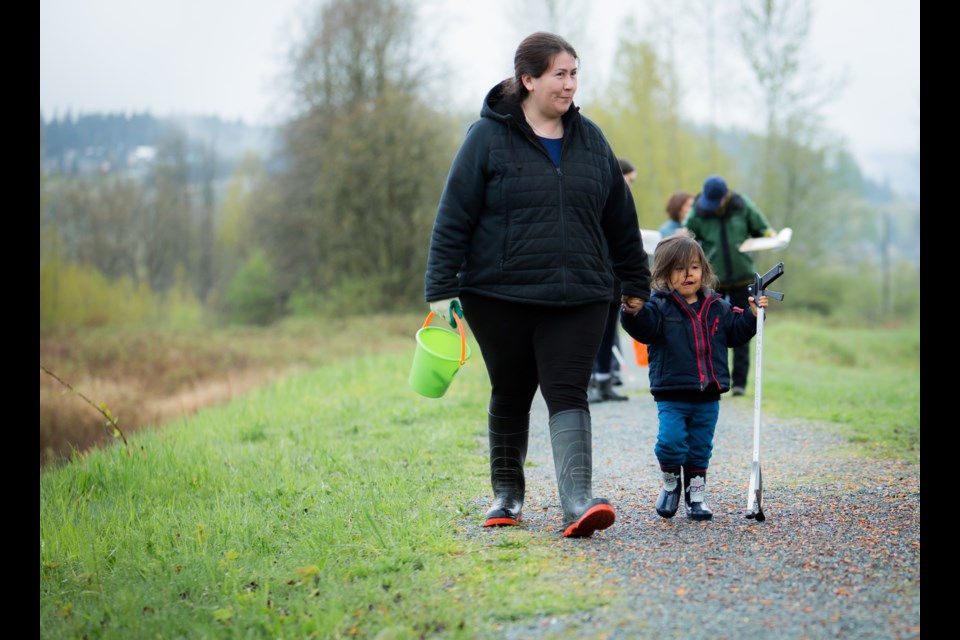Members of the Kwikwetlem First Nation gathered at the mouth of the Coquitlam River this week to collect the flotsam and jetsam scattered under the Mary Hill Bypass.
"It's a little wildlife management area down there — a postage-stamp size area, unfortunately," said Craig Orr, an ecologist who works with the Kwikwetlem First Nation and the Coquitlam River Watershed Roundtable.
Dubbed the Great Shoreline Clean-up, the event was a small community gesture that brought together elders, councillors and future leaders as young as three-years-old.
“This is a start,” said Kwikwetlem councillor George Chafee, who came with his wife and young son, Jamie. “This is bringing people out, taking care of elders, our community — everyone being accountable for what they do and why they do it.”
Armed with long metal claws and orange buckets, the group fanned out along the rivers edge in search of human refuse. By late morning, bag after bucket of garbage hung from a luggage scale weighing the soiled haul.
All kinds of cans: spray cans, pop cans, and beer cans were to be expected. Hundreds of cigarette butts and bits of Styrofoam were no surprise. A yoga mat? It is Greater Vancouver after all. But it was the motorcycle battery, bags of dog poop and bikini top that had people scratching their head. All told, 30 kilograms were pulled from the banks of the Coquitlam tributary, the place where there once swam “red fish up the river.”
A lot has changed since the first dam was built on the Coquitlam River over 100 years ago. Since then, dikes have been raised along the river’s edge to prevent flooding of nearby settlements.
Where a once navigable waterway offered an abundant habitat for juvenile salmon, today water levels have dropped, revealing thick accumulations of sediment that have clogged the river’s arteries.
“We haven't been releasing the flows from the dam,” said Orr. “This river is really constrained. It used to meander all around, which was a natural thing.”
But the sharp decline of rushing water throughout the 20 century has slowly rebounded in recent years. A water use plan that went into effect in 2005 has tripled the flow of water — in its wash, steelhead, chum and coho numbers have crept up.
Two years ago, 5,000 smolts were released at the base of the Coquitlam Dam. After accounting for a one per cent ocean survival rate, Orr says they expect about 50 sockeye salmon to return this season — 25 males and 25 females.
“It doesn't sound like a lot, but the most we've ever had in a single year has been 11 sockeye back in 2008,” he said.
When it comes to the restoration of the Coquitlam River, Coun. Chaffee says he recognizes the enormity of the task, but that gatherings like the 'Great Shoreline Clean-up' offer a tangible, if small step in the right direction.
“Everyone talks about how the stocks are in trouble,” said Chaffee. “The only way you can help is you start with your own watershed.”



